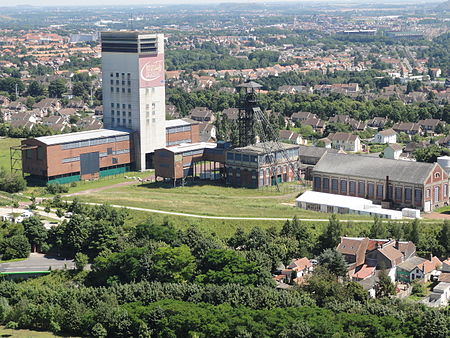The Hohenzollern Redoubt action, 2–18 March 1916 was fought on the Western Front during the First World War. The Hohenzollern Redoubt was a German defensive position north of Loos-en-Gohelle (Loos), a mining town north-west of Lens in France. The Redoubt was fought over by the British and German armies from the Battle of Loos (25 September – 8 October 1915) to the beginning of the Battle of the Somme on 1 July 1916. Over the winter of 1915–1916, the 170th Tunnelling Company RE dug several galleries under the German lines in the area of the redoubt, which had changed hands several times since September 1915. In March 1916, the west side was held by the British and the east side was occupied by the Germans, with the front near a new German trench known as The Chord. No man's land had become a crater field and the Germans had an unobstructed view of the British positions from the Fosse 8 slag heap. The British front line was held by outposts to reduce the number of troops vulnerable to mine explosions and the strain of knowing that the ground could erupt at any moment.
The 12th (Eastern) Division was selected to conduct an attack to capture the crater field, gain observation from crater lips over the German defences back to Fosse 8 and end the threat of German mine attacks. Four mines, the largest yet sprung by the British, were detonated on 2 March and followed up by two battalions of infantry, which captured the new craters, several German occupied craters, Triangle Crater which had not been seen until it was overrun and a large length of The Chord, most of the rest being obliterated in the explosions. The main entrance of the German mine galleries was discovered in Triangle Crater and the 170th Tunnelling Company RE crossed no man's land to demolish the entrance. German counter-attacks concentrated on the recovery of Triangle Crater, which was re-captured on 4 March. The recovery by the Germans of the gallery entrance threatened the positions captured by the British, who attacked Triangle Crater on 6 March and were repulsed.
The British tunnellers got into the German gallery system from a British tunnel and were able to demolish the system on 12 March, which relieved the threat of another German mine attack. Skirmishing around the craters diminished and it was thought that the Germans were concentrating on consolidating new positions. On 18 March, the Germans surprised the British with five mines which had been quietly dug through the clay layer above the chalk. The German attack had nearly as much success as that of the British on 2 March, forcing them back to the original front line, before local counter-attacks regained some of the craters. When the fighting died down after 19 March, both sides occupied the near lips of the craters. Brigadier-General Albemarle Cator, the 37th Brigade commander, recommended that attempts to occupy craters should end and the near lips be held instead, because craters were death traps against howitzer and mortar fire; observation from the crater lip was obstructed by its convex shape and the large lumps of chalk brought to the surface by the explosions.










